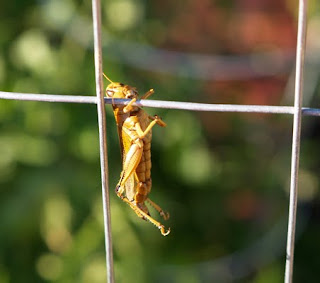
While much of the country recorded high temperatures the past few weeks (like the 90s in Denver), we here in Montana have stayed pretty darn cool.
Experienced gardeners around Bozeman know to wait until Memorial Day to move transplants outside. I did. In fact, I waited until June 6 because it was chilly. Our starts were in the sunroom and ready to go: peppers, tomatoes, squash, beets, cauliflower and more. It took a couple of hours and everything looked great, until…
Driving home from the post office on Monday I saw an ugly black cloud moving toward the mountains and over the bench where our house sits. Rain, I figured. As I turned into driveway the hail came. Big, golf-ball-size chunks of ice. The wind gusts hurled the balls with ferocity. I was afraid to get out of the truck and decided to wait a minute. By then, it was too late.
When it let up long enough to check the garden I ran across the yard ready to unfurl the fabric on my hoop tunnels. What a sorry sight! Everything macerated—except the garlic, planted last fall and already more than a foot tall, and the spinach. Even the skinny onion sets were shredded.
Okay, this is zone 4 right? Hail happens.
Undaunted, I bought plants at a local nursery and planted all the same vegetables the next weekend. On Sunday. Sure that I’d seen the last of my woes, I dusted my hands feeling happy, until…
Monday morning I woke to walk the dogs up the nearby canyon, walking past our garden, which is well fenced to keep the deer out. Dang if something hadn’t come in the night and eaten all the tender leaves off the Brussels sprouts, cauliflower, squash—everything newly planted except the tomatoes (well, thanks for that anyway).
Looking around I was dismayed to discover a gopher hole (actually a Richardson ground squirrel) inside the fence at the far end of the garden! For the next week I tried to thwart this little bugger—throwing pellets of poison down his hole (I’d never do this outside the fence where other animals could dig it up, i.e. our dogs and cat for starters); set a trap (he just pushed it out of his way, untripped; filled the hole several times with dirt (which he easily spewed out); and out of desperation, set a heavy paver over the hole (he moved the entrance outside the hole). So I got more pavers and practically cemented the whole area around his hole. It worked. (He’s still alive, but for now he’s a one-hole gopher, outside the fence.)
Elated, I replanted the garden for the third time. I felt like I probably should explain myself to the staff at the nursery, but figured they’re probably used to seeing people keep coming back to buy the same plants over and over again. Hey, these are the Rocky Mountains, right?! We’re used to futility.
I planted a fourth time, and stapled row covers over the new plants. This helped for a few days and I was momentarily hopeful. Alas, the leaves started getting picked off here and there until there was nothing left but the main stems. Interestingly, there was no damage to plants in the raised beds. Why? Because the invaders couldn’t climb up a 2x10? This theory suggests a mole, vole, or shrew, of which our fields have probably hundreds. And they could easily pass through the 2x4 mesh of the wire fence.
But why this year and not last? Why me?
On Father’s Day our son Steve brought me four lovely pepper plants, a big tomato plant, and a Jerusalem artichoke. Think I planted them outside? No way!
I bought an Earthbox (more on this clever container system in a future issue) for the peppers and tomato, and planted the artichoke in a big container—IN THE SUNROOM. I figured as long as I can keep the white flies out, I’ll be fine.
The next morning at 5:45 I trotted downstairs to walk the dogs, who often sleep in the sunroom when it’s too warm in the house proper. Boulder, our big male border collie, ran up to me expectantly. Strangely, there was dirt all over his muzzle. I looked past him to my Father’s Day plants. He’d dug up the artichoke. I guess its roots smelled good. Darn him.
Scientists are predicting an unusually bad year for grasshoppers. I’m ready for them. Yup, what a surprise when they come flying out of the dry fields into my garden ready to chow down, and find—nothing.
Some years you can’t win for losing.
—Dan Spurr










